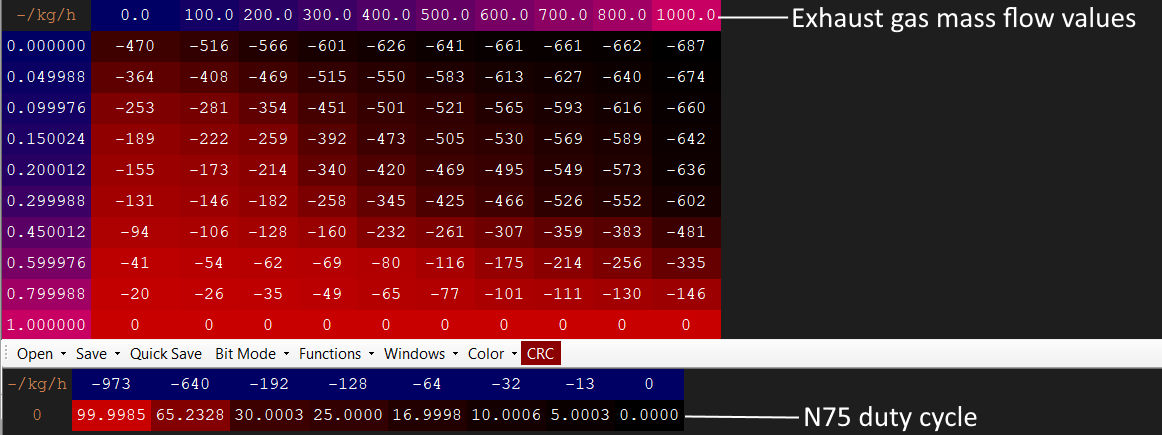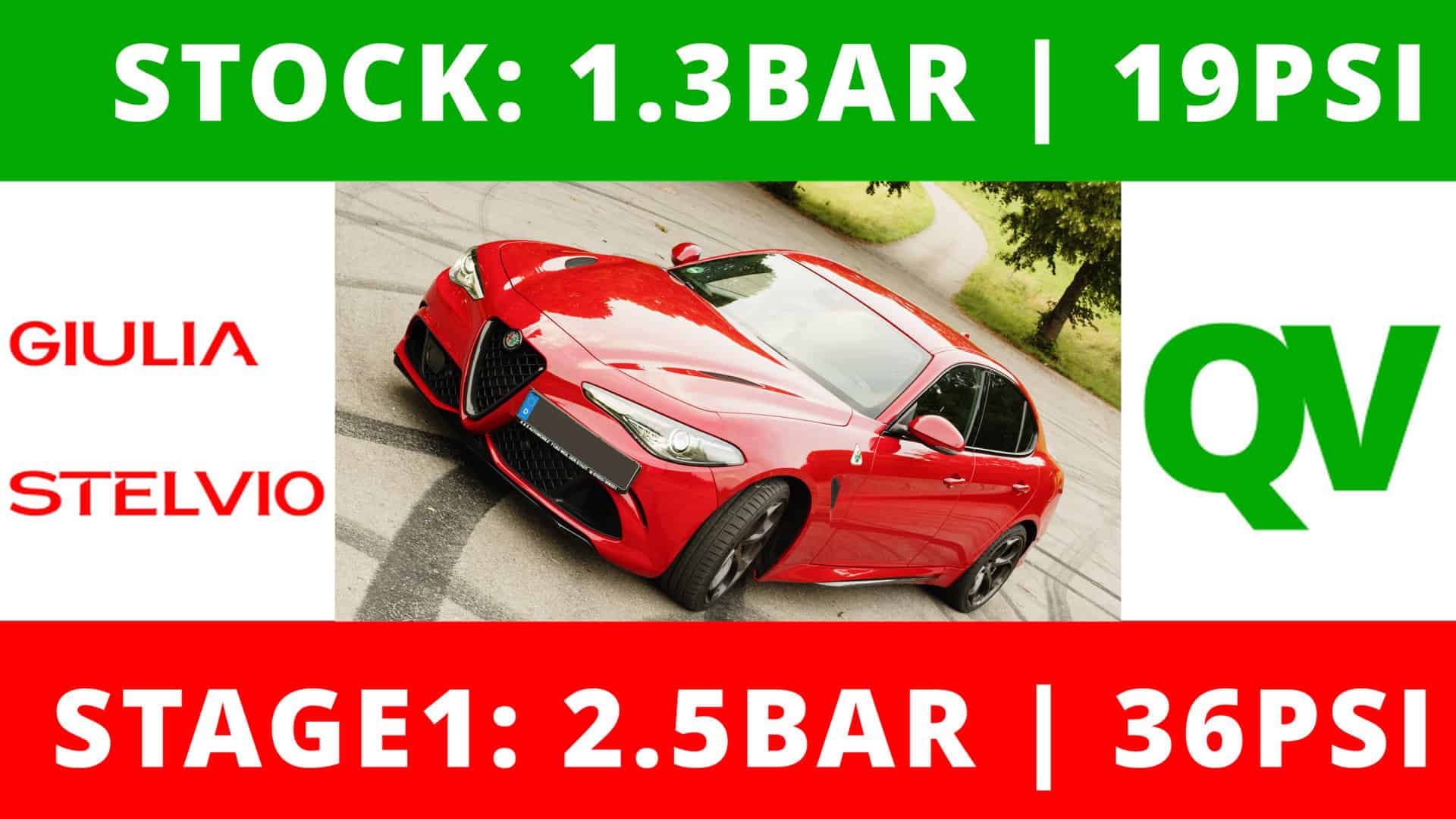Alfa Romeo Giulia QV is not an easy car to tune due to some hardware and software limitations.
The 2.9T is pretty much the same as the Ferrari 3.8T engine except it has two cylinders less and of course lower power and torque.
Even the Engine Control Unit (ECU) is the same: Bosch MED17.3.5
To read the file, the ECU must be removed from the car and connected on the bench.
These days this is the only well-known method of reflashing by tuners.
Luckily we don’t need to open the ECU like we had to some years ago.
We had to spend some time just to remove it from the car, because in this case there are actually two ECUs (master and slave) and they are mounted behind the engine on the firewall.
Fortunately we have the opportunity to apply a patch that will allow us to tune this car on the fly via the OBDII connector.
Another important thing is a logger. Without a decent logger it is impossible to tune it well. We used our own logger, which allowed us to log any of the 17500 parameters.
So what did we tune? Actually there are three very important things that must be correctly modified to achieve more power and torque.
- Air fuel ratio (AFR)
- Ignition angle
- Boost pressure
There are some other parameters such as camshaft position, dump valve opening, low and high fuel pressure settings, etc., but they are not as important as those listed above.
AFR
A mixture that is too rich (more fuel/less air) gives you higher fuel consumption and it can even lead to misfires(AFR < 9.5).
A mixture that is too lean (less fuel/more air) could be dangerous for the engine as exhaust gases temperature rises until something gets destroyed (turbochargers, pistons etc.).
So we set it on 12.00 AFR under high load and that gives us more power and keeps the engine safe.
Ignition angle
Ignition angle that is properly advanced increases the power/torque of the engine.
Ignition angle that is too late increases the temperature of the exhaust gases.
Ignition that is too advanced can damage the engine due to high pressure in the combustion chamber that might cause premature detonation(knock) in the cylinders.
Of course there are many manufacturer’s software limiters that will not allow for this to happen and that’s why we keep them.
Boost PRESSURE
In most cases it’s enough just to request more load (=> more boost) and actual boost will follow the requested. But on many modern cars it’s not so easy to achieve.
Stock boost is about 1300 mBar (2300mBar including atmospheric pressure). We tried to find the limit to how much pressure turbochargers can provide. 1700mBar, 1800mBar, 1900mBar… nope, still 1800mBar and less than 80% N75 duty cycle.
The wastegates are controlled by ECU. The manufacturer didn’t need to increase the boost pressure above 1800 mbar. As a result the N75 duty cycle map is limited and needs to be recalibrated, but for this we need to know the exhaust gas mass flow. Hmm…
The car has no sensor that can measure it…

N75 duty cycle map
So we changed the program code and after that we only need to know requested boost pressure. We wrote about 20 logs just to know what pressure is at a duty cycle of 10, 20, 30, 40, 50, 55, 60 ... 100%. Using that data we recalibrated the map using a machine learning.

Custom N75 duty cycle map
1800mBar, 1900mBar and limp mode.
There was another software limiter.
1900mBar is just fine. 2000mBar, 2030mBar, 2030mBar… misfires.
HARDWARE LIMITERS
There are four boost pressure sensors. First two are mounted before the throttles, and the other two – after. And they can measure up to 2000mBar.
We found another aftermarket sensors, recalibrated them, because they actually show the voltage that needs to be converted into boost pressure.
2100 mBar, 2200 mBar. Nice!
But what about the exhaust system? We mounted a pressure sensor and at 2000 mBar of boost the exhaust gas pressure was about 300 mBar (5 psi). We found it acceptable.
STAGE 1 RESULT
Alfa Romeo Giulia QV is equipped with a manual transmission and it’s a pretty rare car. Many Giulia owners would love to have MT because it’s really fun. Anyway the car with MT is around 0.6 sec. slower due to gearing.
100-200km/h measurements:
- MT 9.1 sec. We got 9.3-9.4 sec. actually but there was a passenger in the seat.
- AT 8.5 sec.
We got 7.4-7.6 sec 100-200km/h with normal fuel (non-racing), catalytic converters installed, two people inside. This is not the best but really is a stable result. So it’s 1.8-2.0 sec. faster than stock.
6.5-6.6s 100-200kph E85 MT
We offer a unique solution for many modern vehicles, including the Alfa Romeo Giulia QV and Stelvio QV – Multimap!
Now you can take control of the ECU program yourself!
MULTIMAP:
Stock: Standard Performance
Stage 1: 580HP 850NM
Stage 2: 600HP 1000NM
E85 / GASOLINE MODE
650HP 1000NM
We offer a unique opportunity to choose the fuel type for the Alfa Romeo QV.
Switching takes only a few seconds. Want to use E85 to gain 50–70 extra horsepower and protect your engine from deposits? No problem. Can’t find E85 at the gas station? Simply deactivate the E85 mode.
Exhaust Flap Control
Want to fully open the exhaust flap? No problem, just tap the screen on your phone.
ANTI-THEFT MODE
Since an Alfa Romeo can be stolen in 60 seconds, the “Anti-Theft” mode is extremely relevant. Using the iOS or Android app, protection can be activated or deactivated in just a few seconds with an 8-character hexadecimal code.
This means there are 4,294,967,296 unique codes in the range from 00000000 to FFFFFFFF. Since we use brute-force protection, cracking such a code within a reasonable time (months) is virtually impossible.
UDS/CCP protocols are disabled, making it impossible to reflash ECUs via OBDII.
Quiet Start
Many QVs are configured to open the exhaust flaps during a cold start, making the start-up noticeably louder compared to other vehicles. Additionally, catalytic converter heating is activated. This essentially involves delayed ignition timing, which makes the exhaust sound even louder. Our special mode allows you to close the exhaust flaps during start-up and disable the catalytic converter heating.
And the best part: The modes can be combined, for example, Stage 1 + E85, Stock + E85 + Exhaust Flap Control, etc.
No one else in the world offers anything like this – at least not at a reasonable price.

